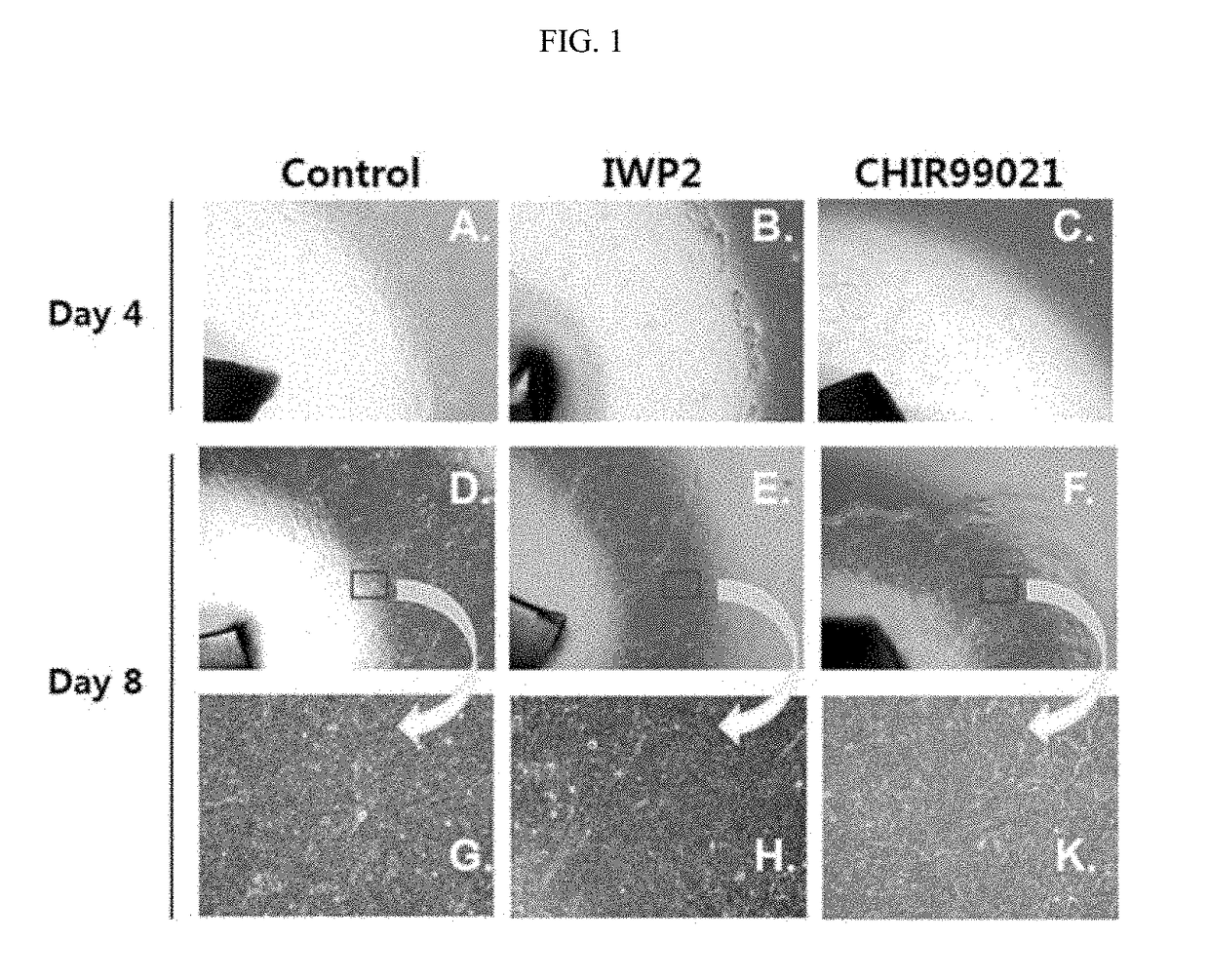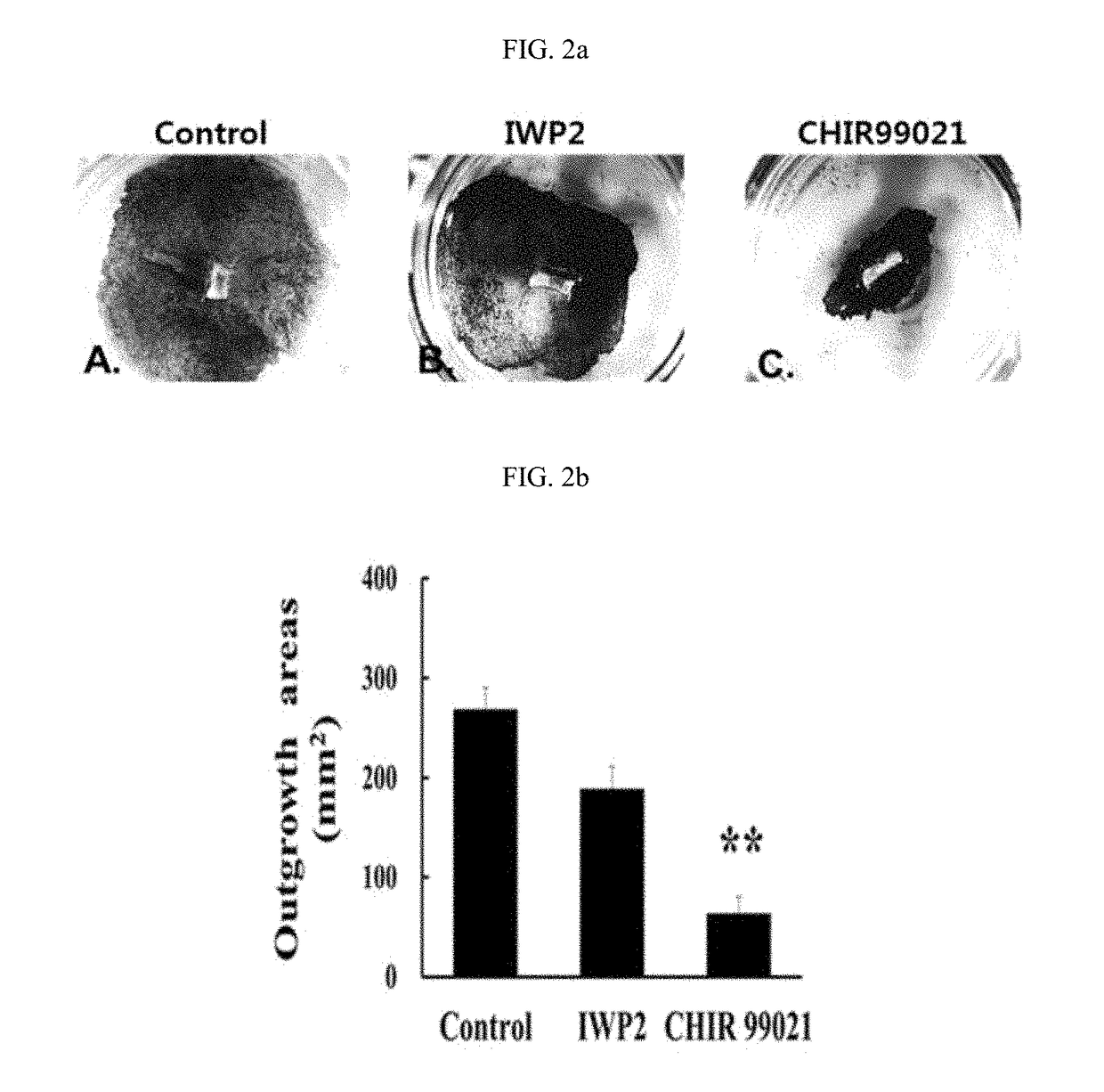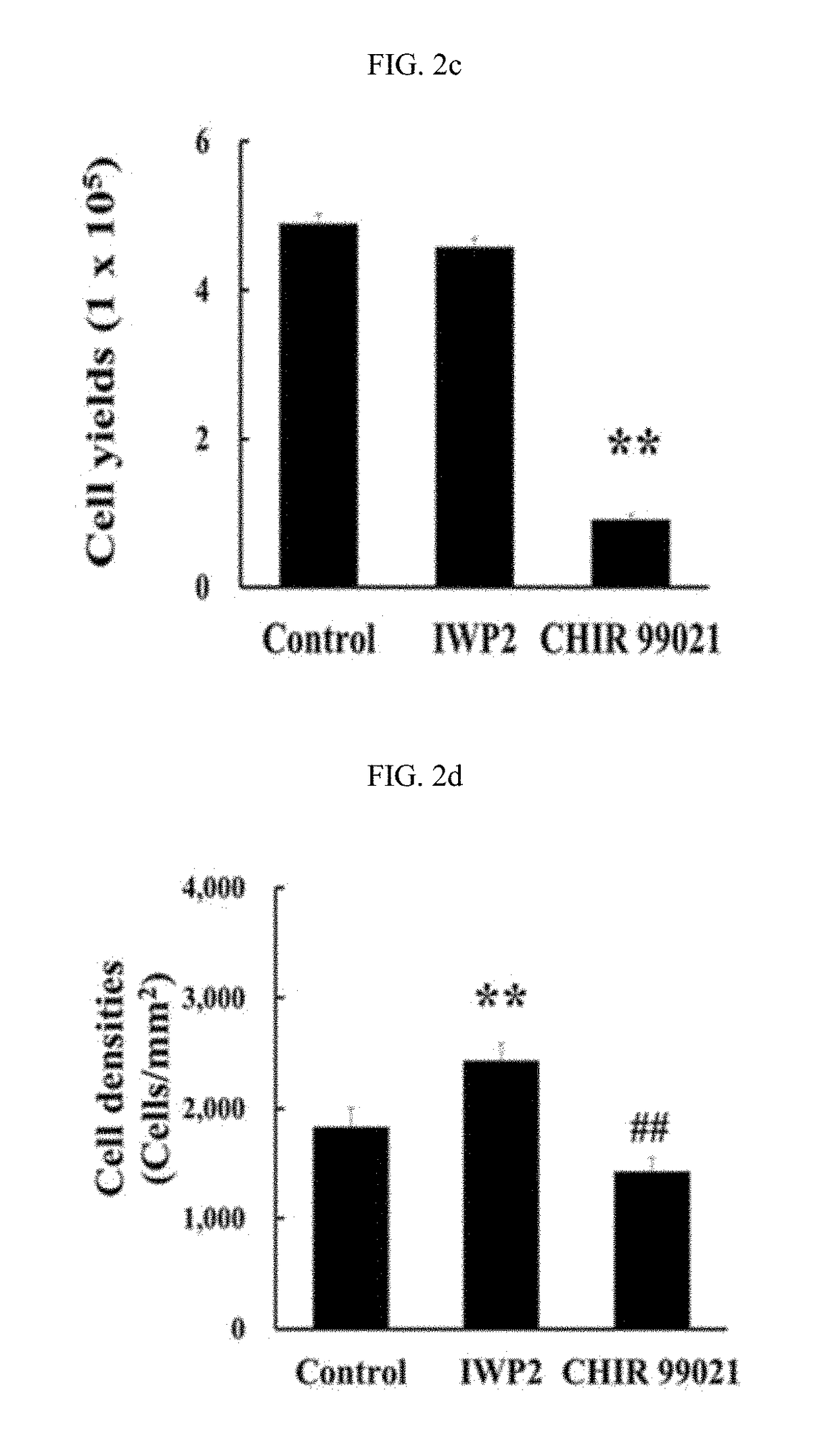Methods for improving proliferation and stemness of limbal stem cells
a stem cell and proliferation technology, applied in the field of stem cell proliferation and stem cell proliferation, can solve the problems of corneal epithelium renewal failure, serious visual impairment, and risk of lscd in the donor eye, and achieve the effect of improving the colony forming efficiency (cfe) of lscs
- Summary
- Abstract
- Description
- Claims
- Application Information
AI Technical Summary
Benefits of technology
Problems solved by technology
Method used
Image
Examples
example 1
Preparation and Methods for Experiment
[0052]1-1. Preparation of Limbal Tissue
[0053]Post- keratoplasty discards of human corneal-limbal tissues from unidentifiable cadavers were obtained from an eye bank, and in the experiment, only corneal limbal tissue (1) isolated from a donor ranging in age from 30 to 65 years at death, (2) isolated within 12 hours after the death of the donor, (3) stored in Optisol (Bausch & Lomb, USA) less than 48 hours after the tissue harvest, and (4) isolated from a donor who had not been infected by human immunodeficiency virus (HIV), hepatitis B or C virus, Epstein-Barr virus, or syphilis was used.
[0054]The corneal limbal tissue satisfying the above-described conditions was splited into 8 equal quarters using a surgical instrument on a horizontal sterile-air-flow hood, and the conjunctival edge of each quarter was immersed shortly in 1% trypan blue (Sigma, USA) to stain conjunctival stroma, and all ramnants of conjunctiva were carefully removed using conju...
example 2
Comparative Analysis of Explant Outgrowth Proliferation Ability by Regulation of Wnt / β-Catenin Signaling in Limbal Explant Cultures
[0065]To identify effects of the Wnt / β-catenin signaling on the limbal explant outgrowth cultures, cells were cultured by adding 10 μM of the Wnt inhibitor IWP2 or 3 μM of the Wnt signaling agonist CHIR99021 as a GSK3 inhibitor to a medium under the culture conditions for a human limbal explant cultures according to the methods described in Examples 1-1 and 1-2, and explant outgrowth proliferation was observed using a phase contrast microscope on day 4 and 8.
[0066]The Wnt inhibitor IWP2 inhibited the Wnt signaling through inactivation by inhibiting an acetyltransferase activity of the porcupine protein involved in acylation of a Wnt protein, resulting in inhibition of Wnt / β-catenin signaling. Meanwhile, the GSK3 inhibitor CHIR99021 inhibited GSK3, which is involved in degradation of the β-catenin protein in cells, thereby increasing a level of the β-cate...
example 3
Comparative Analysis of LSC Ratio by Regulation of Wnt / β-Catenin Signaling in Limbal Explant Cultures
[0071]In order to identify effects of the Wnt / β-catenin signaling on LSCs present in the explant during the limbal explant culture, cells were cultured by adding 10 μM of the Wnt inhibitor IWP2 or 3 μM of the GSK3 inhibitor CHIR99021 to a medium for a human limbal explant cultures according to the method described in Examples 1-1 and 1-2 and then subjected to flow cytometry according to the method described in Example 1-4, resulting in detection of the side population of JC1low cells in the explant cultures.
[0072]As a result, as shown in FIG. 3, it was identified that the explant cultured by IWP2 treatment showed the highest JC1 exclusion cell cohort (JC1low), which was 29.6±2.6%, and the CHIR99021-treated group showed the lowest JC1 exclusion cell cohort, which was 10.9±1.3%. Also, the explant cultured by IWP2 treatment showed the highest percentage in a lower left quadrant (LLQ) ex...
PUM
| Property | Measurement | Unit |
|---|---|---|
| thickness | aaaaa | aaaaa |
| size | aaaaa | aaaaa |
| thickness | aaaaa | aaaaa |
Abstract
Description
Claims
Application Information
 Login to View More
Login to View More - R&D
- Intellectual Property
- Life Sciences
- Materials
- Tech Scout
- Unparalleled Data Quality
- Higher Quality Content
- 60% Fewer Hallucinations
Browse by: Latest US Patents, China's latest patents, Technical Efficacy Thesaurus, Application Domain, Technology Topic, Popular Technical Reports.
© 2025 PatSnap. All rights reserved.Legal|Privacy policy|Modern Slavery Act Transparency Statement|Sitemap|About US| Contact US: help@patsnap.com



